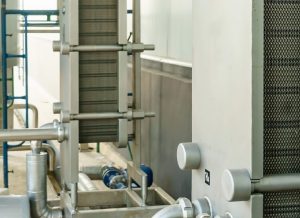 Since heat exchangers became popular as high-performance thermal management solutions, they’ve become even more versatile as manufacturers have developed numerous variations of the technology. For example, while heat pipe-based units were one of the first types of heat exchangers to be widely implemented, cold plates have become as equally common and popular for a wide variety of thermal management applications. Today, we examine why by answering a few questions about cold plates and their abilities to rapidly transfer high levels of heat across a variety of surfaces.
Since heat exchangers became popular as high-performance thermal management solutions, they’ve become even more versatile as manufacturers have developed numerous variations of the technology. For example, while heat pipe-based units were one of the first types of heat exchangers to be widely implemented, cold plates have become as equally common and popular for a wide variety of thermal management applications. Today, we examine why by answering a few questions about cold plates and their abilities to rapidly transfer high levels of heat across a variety of surfaces.
What Are Cold Plates?
The basic function of any heat exchanger is to collect electrical waste heat as it’s emitted and then transfer it away from sensitive components, dissipating it safely once its far enough. They do this through the use of a cooling fluid that efficiently absorbs the heat without allowing the temperature within the heat exchanger to rise. Cold plates contain paths that carry this fluid where needed, and are designed to maximize heat absorption and transfer within limited spaces.
How Do Plate Heat Exchangers Work?
In a heat pipe, the fluid flows through the pipe once it’s been heated, then circulates back toward the heat source to continue collecting and transferring heat. In cold plates, the fluid flows through strategically machined flow paths within the plates, utilizing the heat transfer capabilities of both the metal plate and the fluid. As the heat reaches the plate, it is quickly absorbed by the fluid within the flow paths. Depending on the amount of waste heat being emitted, the size of the system that the heat exchanger is cooling, and the operating specifications of the technology, cold plates are often ideal for applications that require the highest levels of thermal management but offer minimal space to accommodate it.
For more information about making electrical thermal management greener, call Noren Thermal Solutions in Taylor, TX, at 866-936-6736.







